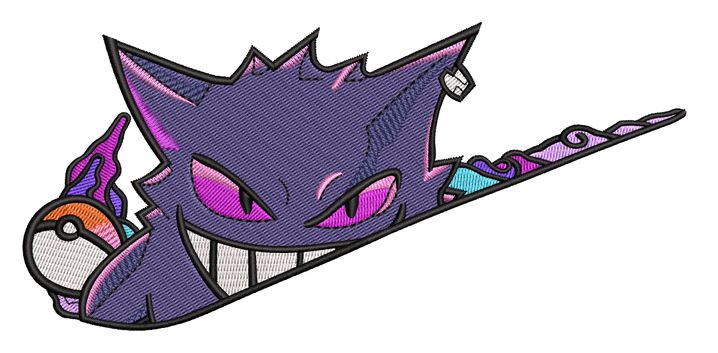News
Gengar and the Art of Storytelling Through Embroidery
In the world of crafts, embroidery has been a medium for storytelling for centuries.
From ancient tapestries depicting historical events to modern-day designs telling personal tales, embroidery offers a unique way to communicate and express emotions through thread and fabric.
And when the subject of that storytelling is Gengar, one of the most iconic and mischievous Pokémon in the Pokémon universe, the possibilities for narrative exploration through embroidery become even more compelling.
Gengar, a Ghost/Poison-type Pokémon, is beloved by fans not just for its strength in battle but also for its devilish, prankster personality.
Its haunting grin, glowing red eyes, and ethereal nature make it a character that has captured the imagination of many.
Through its various appearances in the Pokémon series, Gengar has evolved from a simple ghostly figure to a complex character that offers a wealth of potential stories to tell—whether through video games, the anime, or fan art.
Embroidery, as an art form, allows artists to take the essence of Gengar’s playful yet eerie nature and weave it into narratives, using needle and thread to bring life to stories of mischief, mystery, and the supernatural.
In this blog, we will explore how Gengar’s character can be harnessed to craft compelling stories through embroidery.
From capturing the playful side of Gengar to weaving more complex, multi-layered tales, we’ll discuss how artists can incorporate storytelling into their Gengar embroidery projects.
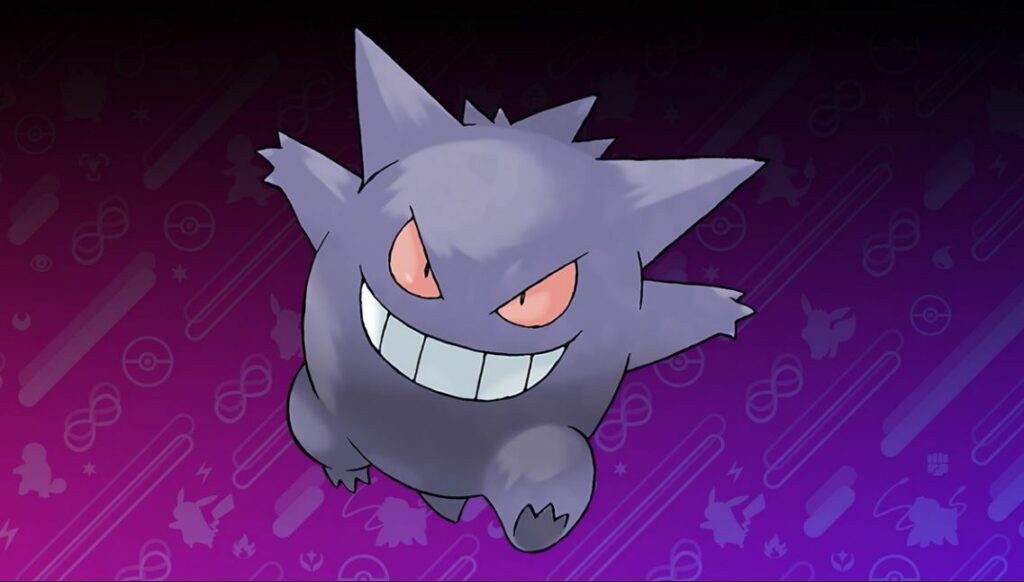
Gengar: A Mischievous Character with a Rich Narrative
Gengar’s Origins and Personality
Before diving into the intricacies of using Gengar as a storytelling medium in embroidery, it’s essential to understand the character itself.
Gengar made its debut in the original Pokémon Red and Blue games in 1996 as a ghostly Pokémon with a mischievous disposition.
Over time, Gengar became one of the most recognizable and popular characters in the franchise.
In the Pokémon anime, Gengar is often depicted as a playful trickster, using its ghostly abilities to play pranks and cause chaos.
It has a distinct personality that is both spooky and comical, making it a fun and dynamic character to represent in embroidery.
Gengar’s actions often involve laughter and fun rather than pure malevolence, which sets it apart from other more sinister or villainous Pokémon.
The lore behind Gengar also adds depth to its character.
As a ghost-type, it is believed to embody the souls of the dead, and some interpretations link it to nightmares and hauntings, adding an eerie undertone to its otherwise playful antics.
This duality—the ghostly and the playful—provides a rich palette for storytelling in embroidery.
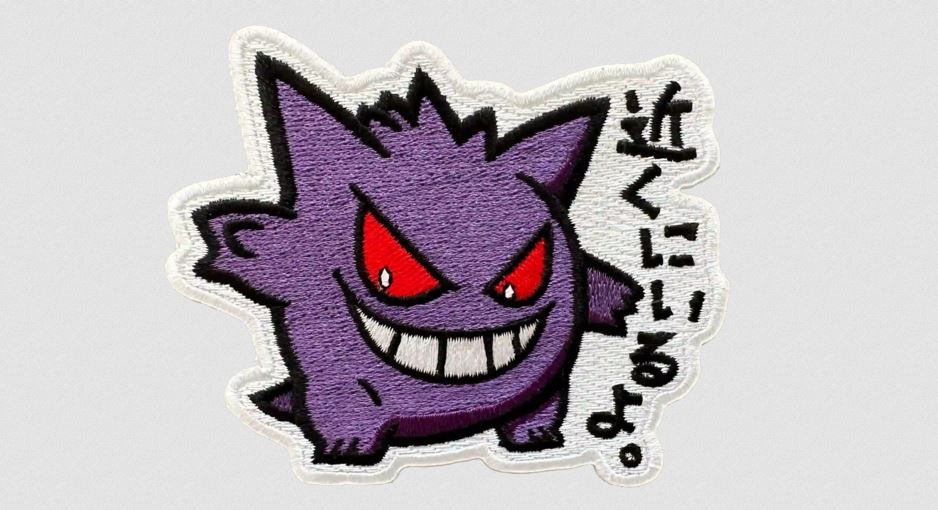
Gengar’s Relationship with Other Pokémon and Humans
Gengar’s relationship with other Pokémon is equally important in its character development.
In the anime, it is often seen in competition with other ghost-types, like Gastly and Haunter, which are part of its evolutionary line.
Gengar’s interactions with Ash Ketchum and other trainers provide a nuanced portrayal of its character. It isn’t just a trickster, but also a loyal Pokémon with its own goals and aspirations.
This complexity offers an opportunity for embroiderers to not only capture Gengar’s mischievous nature but also its evolving relationships.
Through embroidery, artists can tell stories that go beyond Gengar’s usual antics and explore the depths of its character—whether it’s moments of vulnerability, loyalty, or mischievous fun.
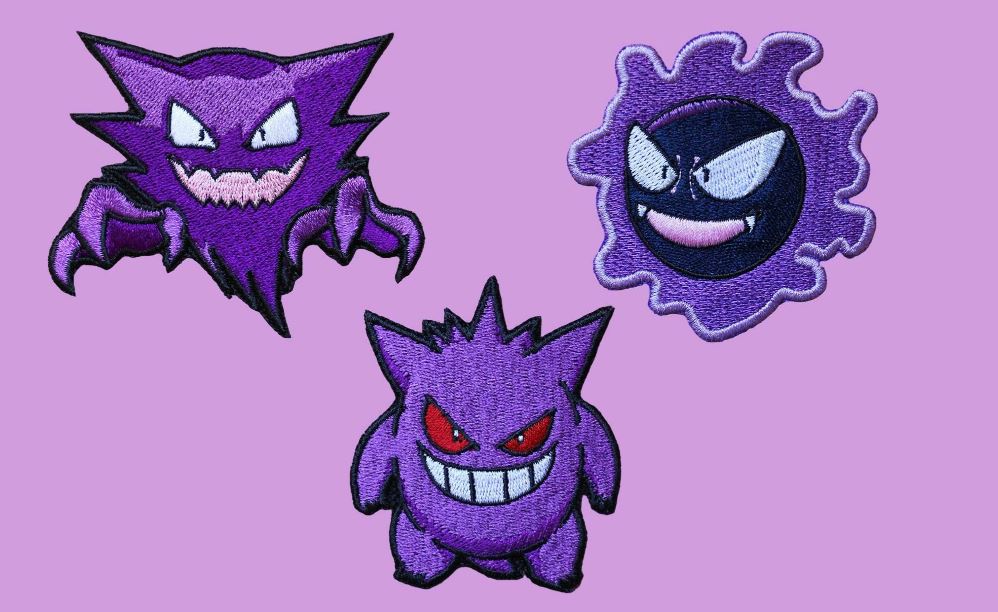
Embroidery as a Storytelling Medium
The Power of Visual Narrative in Embroidery
Embroidery, at its core, is an art form that speaks volumes through visual storytelling.
For centuries, tapestries and samplers have been used to narrate stories, document history, and preserve cultures.
In modern embroidery, the process remains much the same, though artists now have more freedom to explore creative, personal, and even fantastical narratives.
The power of embroidery lies in its ability to capture a moment in time, emotion, or experience through a combination of fabric, thread, and technique.
Unlike other art forms that may rely heavily on verbal or written storytelling, embroidery offers an intimate, tactile experience where every stitch carries meaning.
It’s a slow, methodical process that mirrors the journey of storytelling itself—layer by layer, thread by thread, creating a full picture.
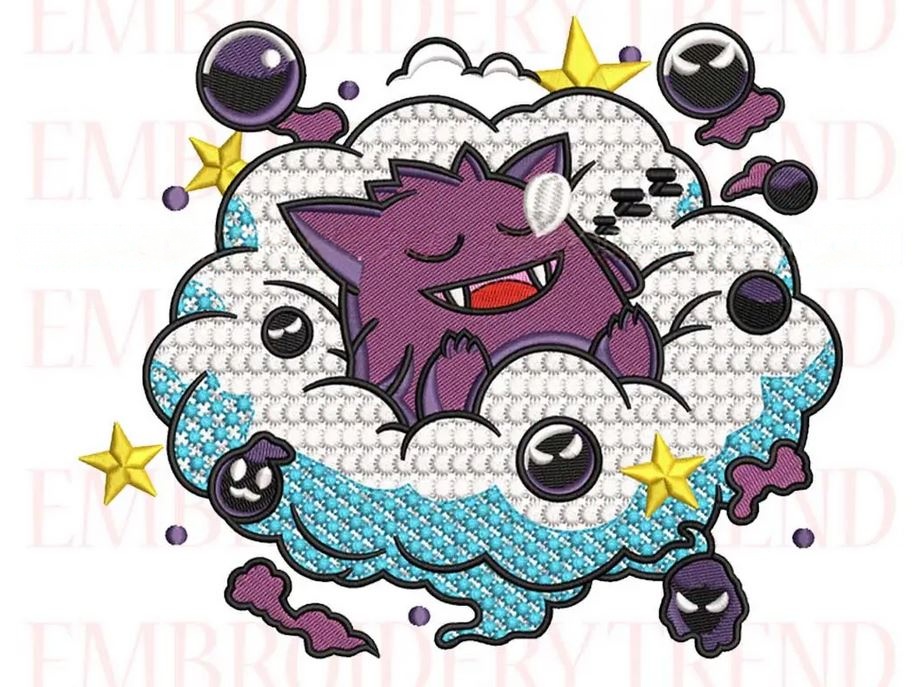
Gengar in Embroidery: Crafting a Narrative
Gengar, with its playful and ghostly nature, presents an interesting challenge for the embroiderer.
How do you translate its mischievous personality and ethereal presence into a two-dimensional medium?
The answer lies in the way the story is told—not just through the character of Gengar itself, but through the scene in which it exists, the composition of the piece,
and the emotions conveyed by the color choices, stitch techniques, and texture.
Let’s break down how to create a compelling narrative using Gengar in embroidery.

Crafting the Story: Elements to Consider in Gengar Embroidery
The Setting: Where Does the Story Take Place?
Every good story has a setting—a world where the characters interact, grow, and change. In embroidery, the setting can be an essential part of the story.
For Gengar, the setting could reflect its ghostly nature, a place where shadows dance, and the supernatural is ever-present. Here are a few potential settings:
- A Dark, Haunted Forest: The eerie shadows of towering trees, mist swirling around, and glowing eyes peeking from the dark. This setting can capture Gengar’s mischievous spirit and supernatural presence, giving it a context where its playful tricks might unfold.
- A Haunted House: A spooky mansion or abandoned building, complete with cobwebs, dusty corners, and flickering candlelight. This setting would be ideal for depicting Gengar’s more sinister pranks—perhaps a surprise scare or a mysterious disappearing act.
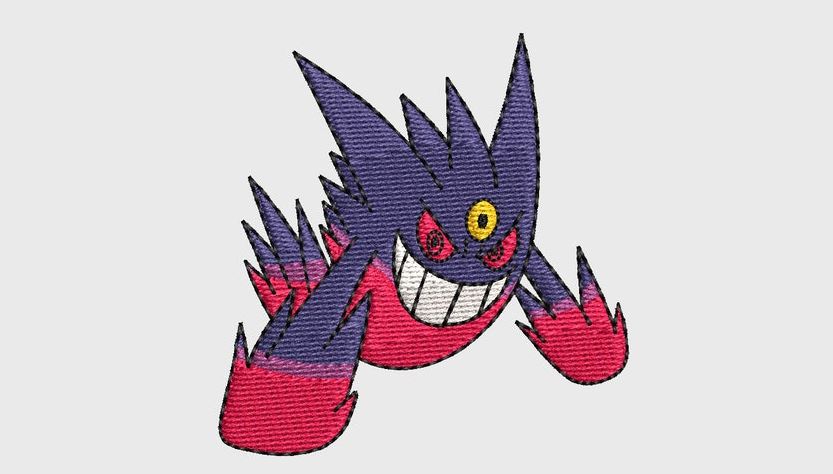
- A Moonlit Night: A scene where Gengar roams the night under a full moon. The contrast between light and dark could represent Gengar’s dual nature, where its eerie ghostly presence is softened by the peaceful beauty of the moonlit sky.
- The Pokémon Arena: In a more battle-focused narrative, Gengar could be depicted in the midst of an intense Pokémon battle, using its ghostly powers to outmaneuver an opponent. The tension and competition here could tell the story of Gengar’s determination and strategic cunning.
The Emotions: What Is Gengar Feeling?
Gengar’s character is defined by its wide range of emotions, from playfulness to mischief and even moments of vulnerability.
How you choose to portray Gengar’s emotions can deeply influence the narrative of your embroidery. Here are a few emotional states to explore:
- Mischievous Joy: A lighthearted, fun depiction of Gengar grinning and playing pranks. This could be conveyed through bright, bold colors and loose, fluid stitching techniques to show motion.
- Eerie Intensity: A darker, more sinister Gengar, using its ghostly abilities to create an atmosphere of tension. This could be depicted with deep shadows, jagged stitches, and a more subdued color palette to evoke a sense of mystery and foreboding.
- Loneliness: Despite its mischievous nature, Gengar is often portrayed as a solitary figure in the Pokémon games and anime. A narrative of loneliness could be captured by showing Gengar in a more isolated or introspective moment, perhaps standing alone in a moonlit field or wandering through an abandoned place.
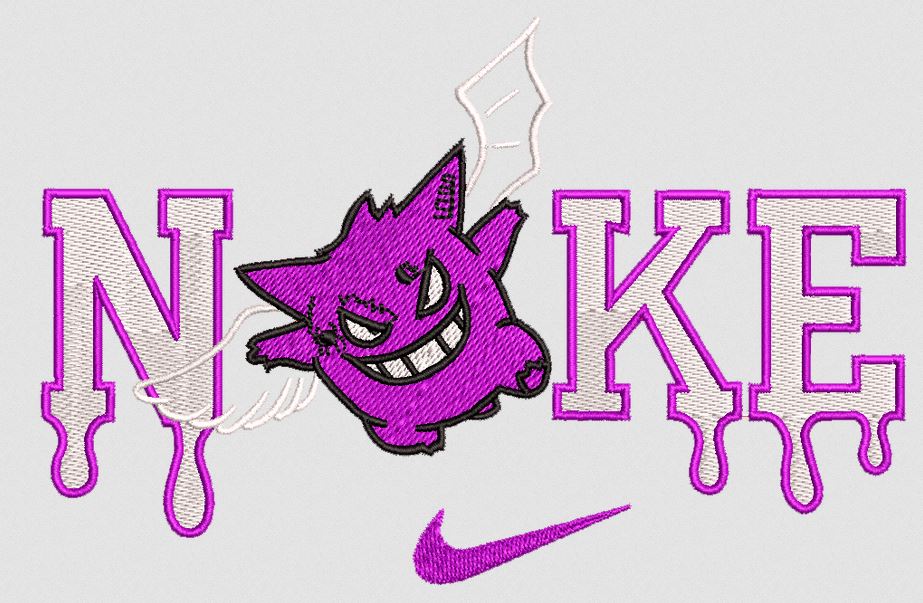
The Technique: How Do You Weave the Story?
In embroidery, the techniques used can greatly enhance the storytelling experience.
Each stitch can evoke a different texture, emotion, or dynamic. Here are some techniques to consider for Gengar-themed storytelling:
- Satin Stitch: Ideal for creating smooth, bold sections of Gengar’s body or background elements like the moon or shadowy mist. This technique helps create a polished look that conveys the fluidity and otherworldliness of Gengar’s ghostly form.
- Backstitch: Perfect for outlining Gengar’s face, grin, or eyes, backstitch allows you to emphasize its features and add sharp, defined details to the character.
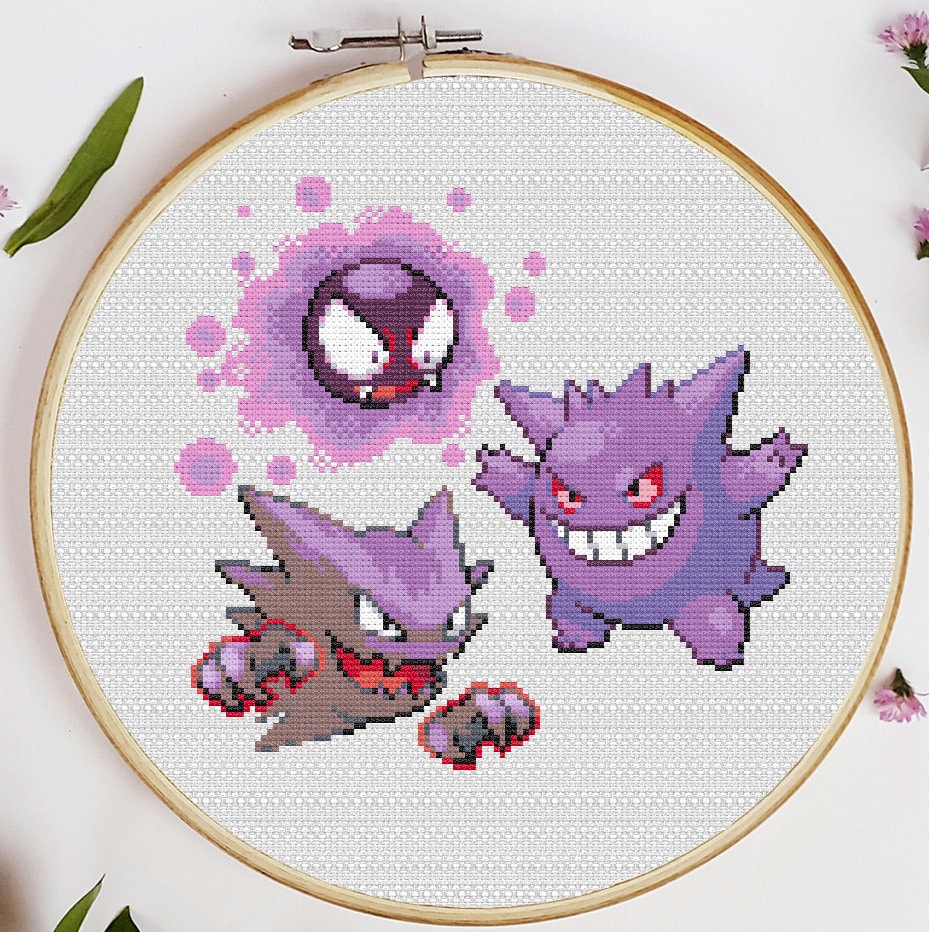
- French Knots: These can be used to add texture to smaller details like glowing eyes or scattered stars in the background, giving the piece a whimsical and dreamlike quality.
- Long and Short Stitch: This technique is great for creating depth and texture, especially for Gengar’s shadowy areas or areas where there is light contrast. The layering of thread can help create a sense of motion or mystery.
- Lazy Daisy Stitch: This playful stitch can be used to add little flourishes or whimsical elements to Gengar’s antics, such as floating clouds or leaves drifting in the air.
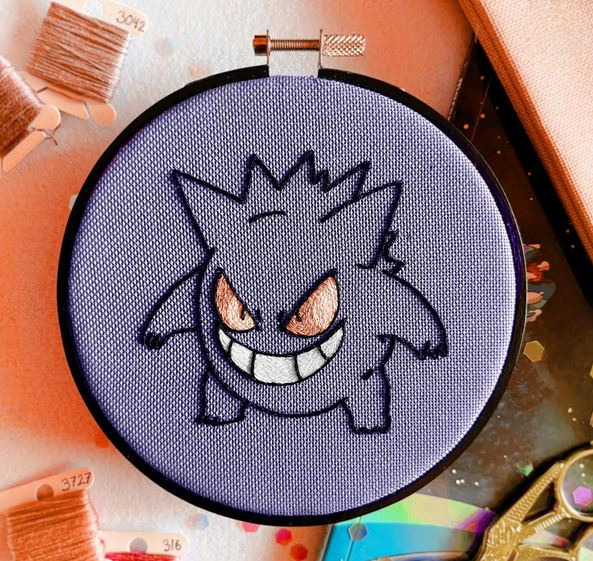
Combining Storytelling and Technique: Creating Your Gengar Narrative
Now that we’ve discussed the basic elements of setting, emotion, and technique, let’s combine them to create a compelling Gengar story through embroidery. Here are a few narrative ideas:
Gengar’s Midnight Mischief
Imagine Gengar playing a prank on unsuspecting travelers, using its ghostly powers to steal small items or disappear into the shadows.
The setting could be a dimly lit forest or a haunted mansion.
The embroidery would use satin stitches for the smooth, eerie outline of Gengar, while backstitching would highlight the sly, exaggerated grin on its face.
You might use French knots for the glowing eyes or small mysterious lights in the background, creating a sense of movement and fun.
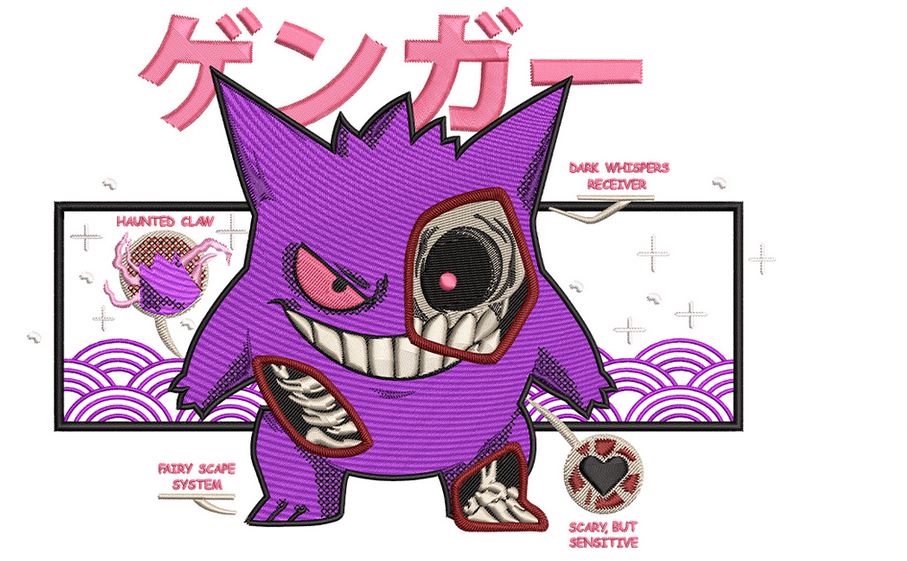
Gengar’s Solitary Night
In contrast, a more somber narrative could depict Gengar alone under a full moon, walking through an empty field.
The embroidery could use long and short stitch to create depth in the shadows, with satin stitches used to highlight the glowing moon and Gengar’s figure.
This piece would focus more on emotion, using darker tones to create a sense of isolation and reflection.
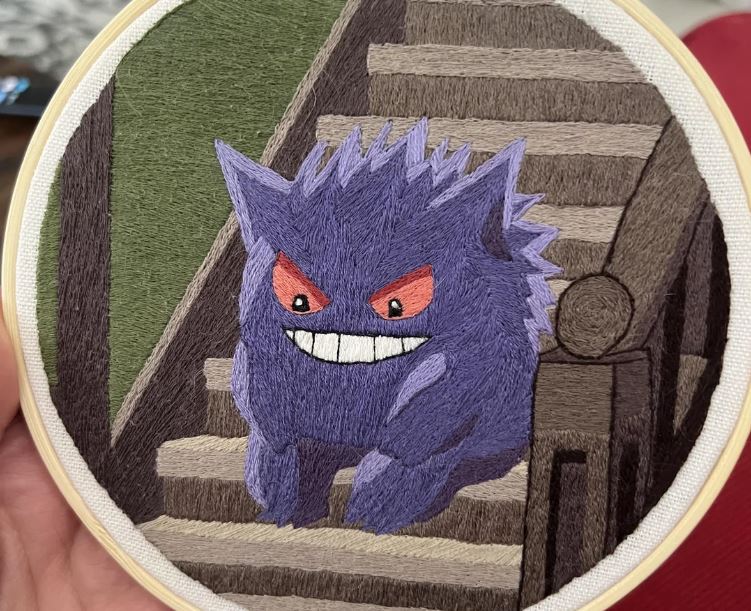
Gengar’s Battle for Dominance
A more action-packed narrative might show Gengar in a fierce battle with another Pokémon.
The scene could be dynamic, with motion implied through lazy daisy stitches or swirling patterns around Gengar.
Bright colors like deep purples and reds could emphasize the intensity of the battle, while backstitch could outline key battle moments, such as Gengar launching an attack.
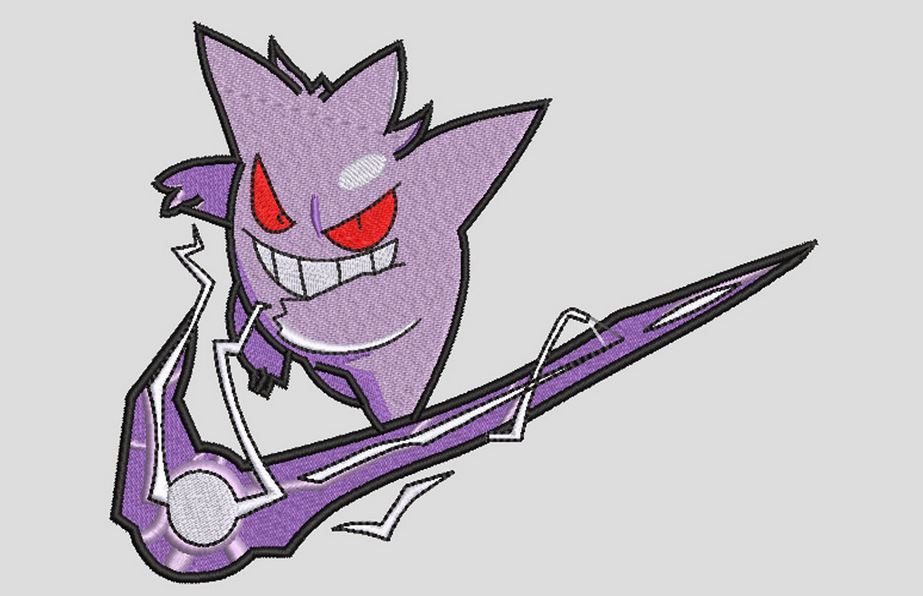
Conclusion: Weaving Stories, One Stitch at a Time
In the world of embroidery, every thread tells a story.
With characters like Gengar, artists have the unique opportunity to craft complex, playful, or even eerie narratives that reflect the multifaceted nature of this beloved Pokémon.
Whether it’s through Gengar’s mischievous antics or more somber, reflective moments, embroidery offers an intimate way to capture the essence of this ghostly character.
By incorporating elements like setting, emotion, and technique, embroiderers can bring Gengar’s world to life, one stitch at a time.
Whether you’re a beginner looking to explore Gengar through simple, playful designs or an experienced artist aiming to create a deep, layered narrative, the art of storytelling through embroidery is limited only by your creativity.

